
Mastering the Future: The Indispensable Role of Future Simple Worksheets (Will/Going To)
The ability to discuss future events is a cornerstone of effective communication in any language. In English, this often boils down to understanding and correctly applying the "Future Simple" tense, primarily through the auxiliaries "will" and "going to." While seemingly straightforward, the subtle distinctions and appropriate contexts for each can be a significant hurdle for English language learners. This is precisely where well-designed Future Simple worksheets (Will/Going to) become an invaluable pedagogical tool, offering structured practice, clarification, and reinforcement that transcends mere theoretical explanation.
This comprehensive article will delve into the critical importance of these worksheets, exploring the nuances of "will" and "going to," outlining effective worksheet design principles, and demonstrating how they can be seamlessly integrated into lesson plans to foster genuine mastery of the future simple tense.
The Nuances of "Will" and "Going To": A Brief Review

Before discussing the worksheets themselves, it’s crucial to solidify the conceptual understanding of "will" and "going to." While both express future actions, their usage is dictated by different intentions and circumstances:
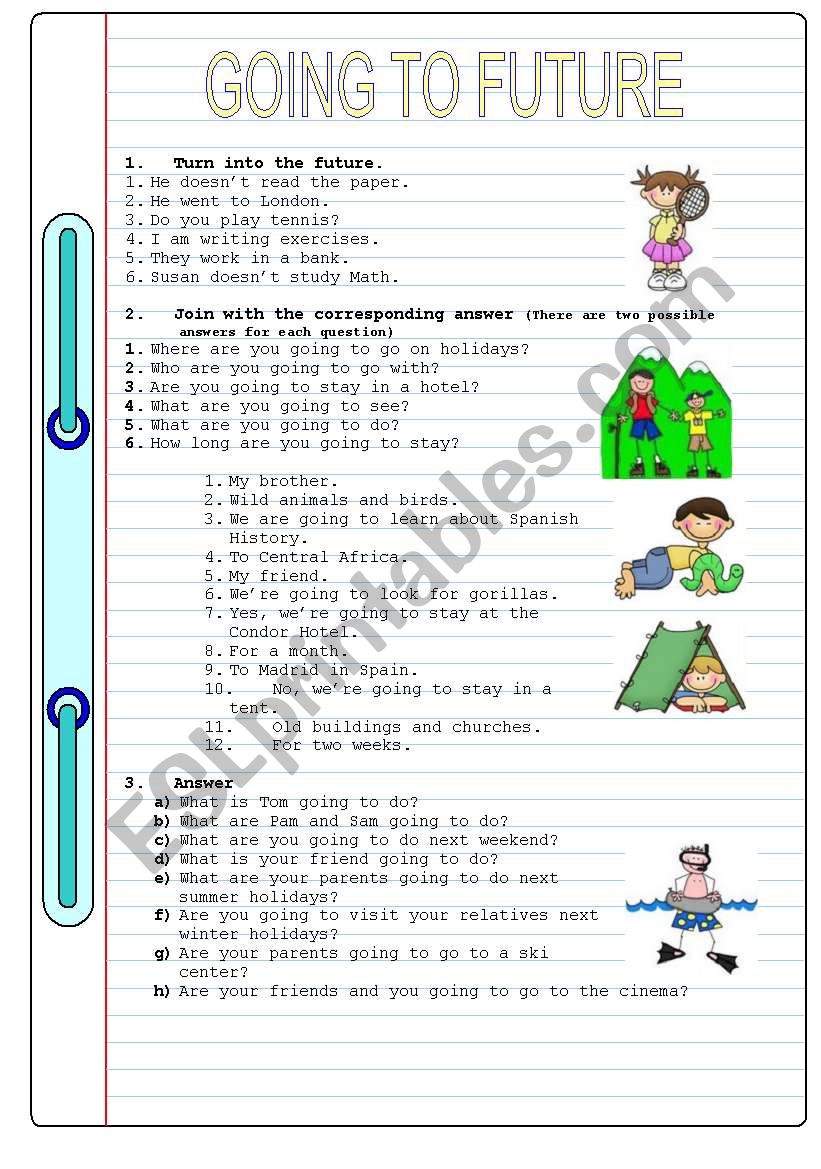
"Will" is typically used for:

- Spontaneous Decisions: Decisions made at the moment of speaking.
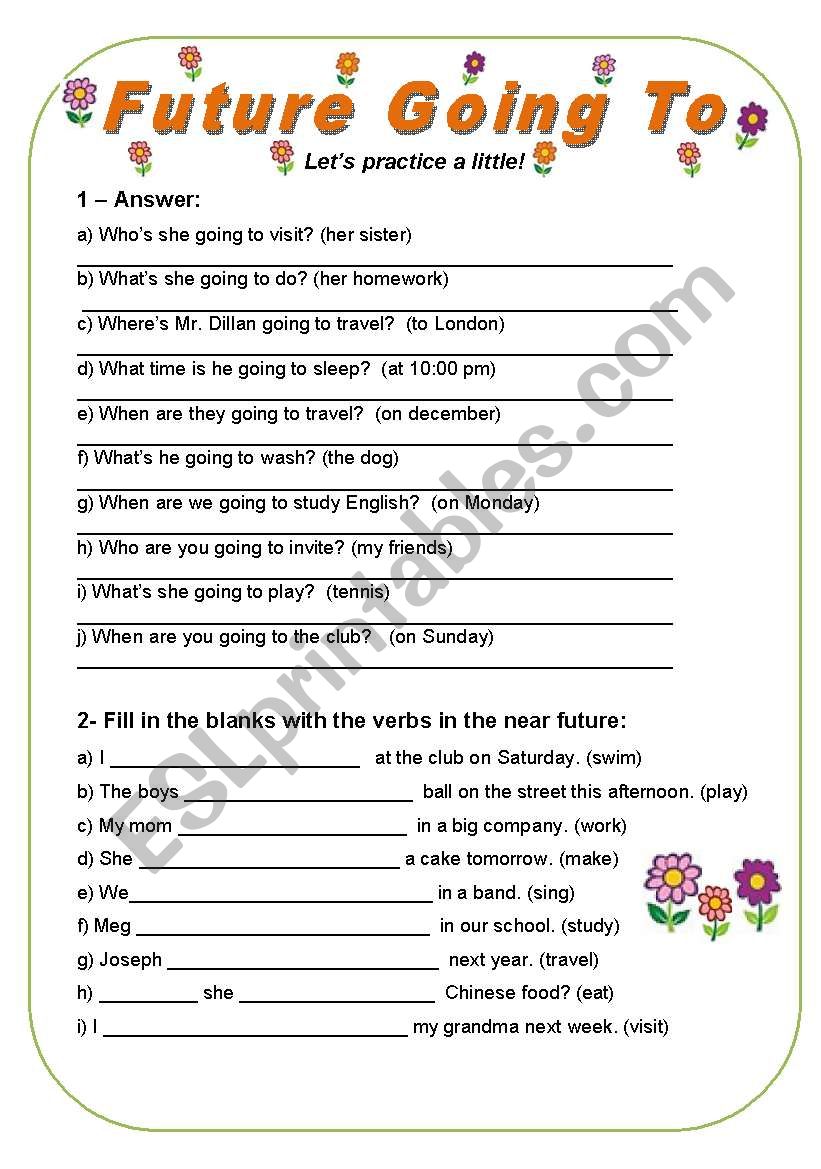
- Example: "Oh, the phone is ringing. I will answer it."
- Predictions (General): Forecasts about the future that are not based on present evidence, often expressing an opinion or belief.
- Example: "I think it will rain tomorrow."

- Offers, Promises, and Threats: Expressing willingness or commitment.
- Example (Offer): "I will help you with your homework."
- Example (Promise): "I will always love you."
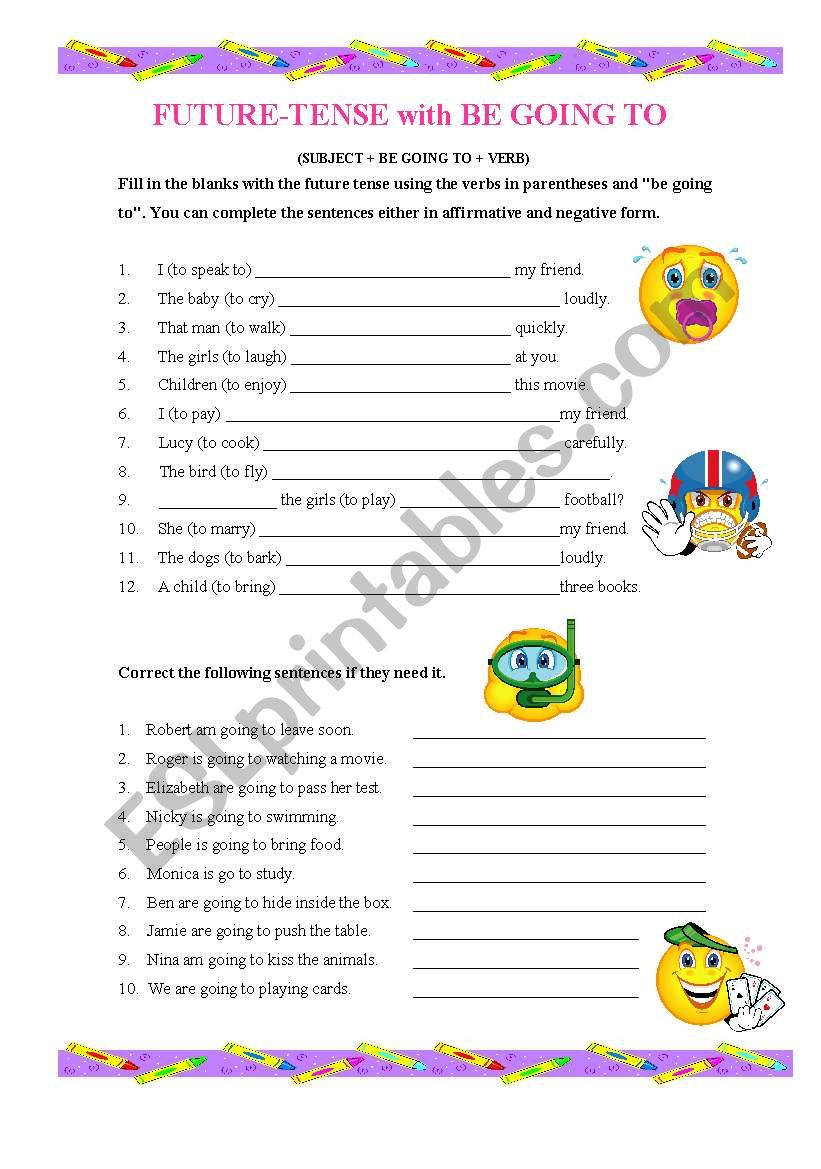
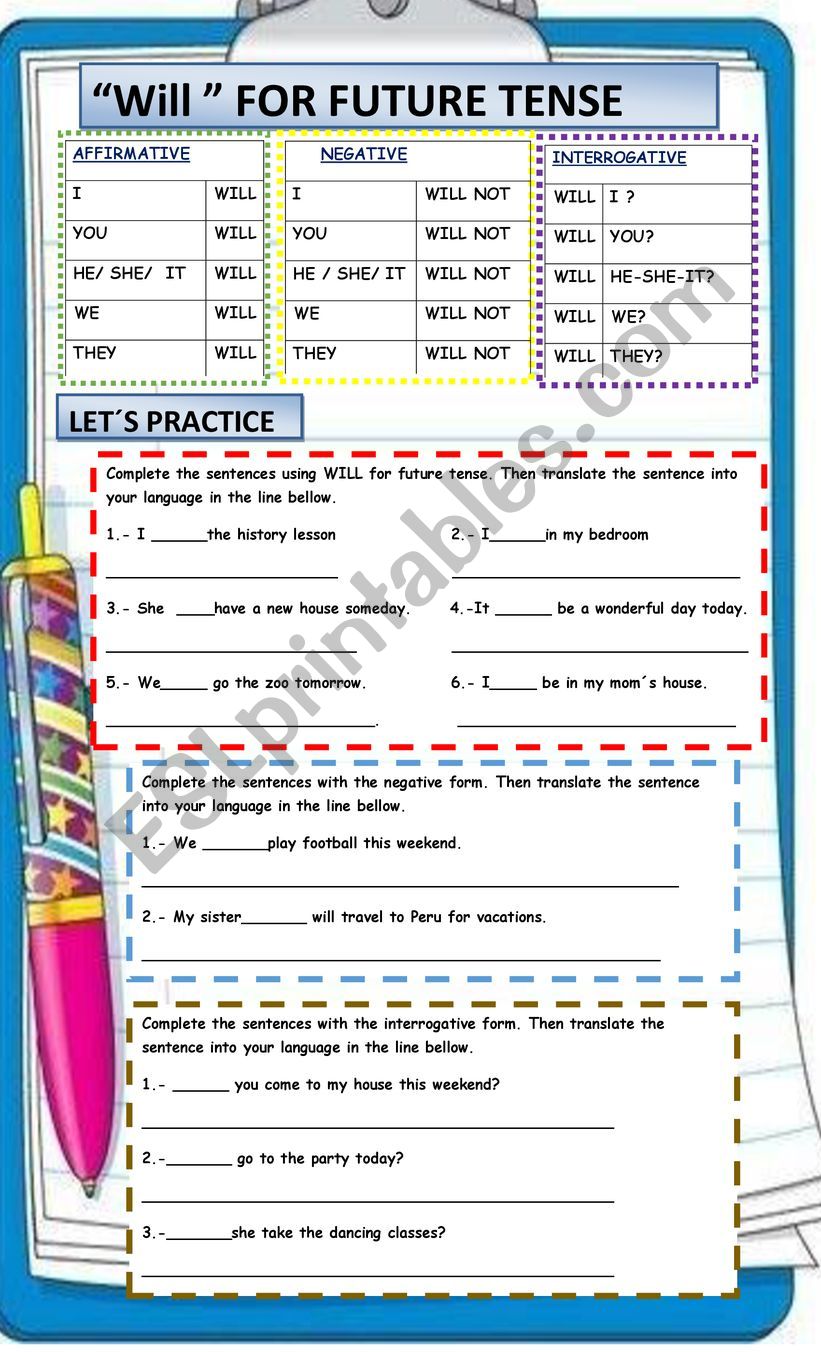
- Refusals: Expressing unwillingness.
- Example: "I will not tell you my secret." (Won’t)
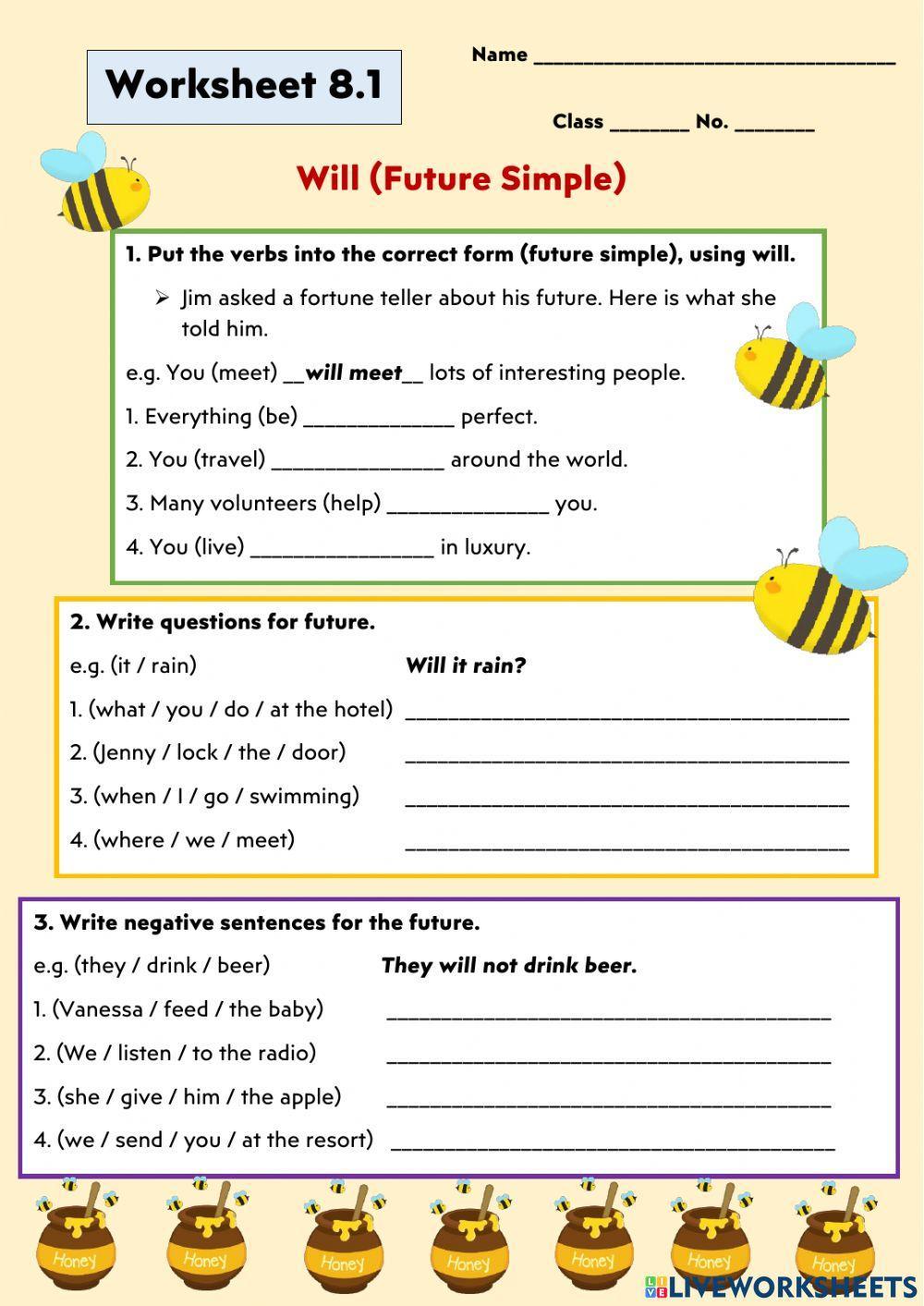

"Going to" is typically used for:
- Pre-planned Actions/Intentions: Actions that have already been decided upon before the moment of speaking.
- Example: "I am going to visit my grandparents next weekend." (The decision has already been made and perhaps arrangements are in place.)
- Predictions Based on Present Evidence: Forecasts about the future when there is clear evidence in the present moment to support the prediction.
- Example: "Look at those dark clouds. It’s going to rain." (The clouds are the evidence.)
It’s also worth noting that in casual speech, especially for predictions, "will" and "going to" can sometimes be used interchangeably without a significant loss of meaning, though precise usage adds nuance. This subtle distinction is precisely what makes Future Simple worksheets (Will/Going to) so vital for learners to grasp.
Why Future Simple Worksheets (Will/Going To) Are Essential
The theoretical explanation of "will" and "going to" is merely the first step. True understanding comes through consistent, varied, and contextualized practice. This is where Future Simple worksheets (Will/Going to) shine, offering a multitude of benefits:
- Structured Practice: Worksheets provide a systematic way for learners to apply the rules they’ve learned. They move from controlled exercises (e.g., fill-in-the-blanks) to freer, more communicative tasks.
- Reinforcement: Repetition through different exercise types helps solidify the grammatical structures and usage patterns in the learner’s mind.
- Identification of Errors: Worksheets allow teachers to quickly identify common mistakes and areas where individual students or the class as a whole are struggling. This informs subsequent teaching and targeted feedback.
- Self-Correction and Autonomy: With answer keys, students can check their own work, fostering independence and a deeper understanding of their errors. This metacognitive process is crucial for long-term retention.
- Contextualization: Good worksheets present grammar in meaningful contexts, moving beyond isolated sentences to mini-dialogues, short paragraphs, or real-life scenarios, which helps learners understand when to use each form.
- Engagement and Variety: A diverse range of worksheet activities can prevent monotony and keep learners engaged, catering to different learning styles.
Designing Effective Future Simple Worksheets (Will/Going To): A Pedagogical Approach
The quality of a worksheet directly impacts its effectiveness. Here are key principles for designing or selecting high-quality Future Simple worksheets (Will/Going to):
-
Variety is Key: Don’t stick to just one type of exercise. Mix and match to challenge different cognitive skills:
- Fill-in-the-Blanks: The most common, excellent for initial practice. Provide the verb in its base form.
- Example: "I __ (visit) my aunt next month." (am going to visit)
- Multiple Choice: Good for distinguishing between "will" and "going to" in specific contexts.
- Example: "Look at that car! It (a) will crash / (b) is going to crash."
- Sentence Transformation: Convert sentences from one future form to another, or from present/past to future.
- Example: "I have decided to buy a new car." -> "I __ a new car." (am going to buy)
- Error Correction: Present sentences with common mistakes for students to identify and correct.
- Example: "I will going to eat pizza tonight."
- Matching: Match situations with the appropriate future form.
- Example: "A spontaneous decision" -> "will"
- Dialogue Completion: Provide incomplete dialogues where students fill in the future simple forms to make sense.
- Picture Prompts: Show a picture and ask students to make predictions or plans using "will" or "going to."
- Example: A picture of someone holding a passport and suitcase. -> "She is going to travel."
- Role-Play Scenarios: Provide scenarios (e.g., planning a party, making predictions about a sports game) where students use the future forms interactively.
- Creative Writing Prompts: Ask students to write a short paragraph about their future plans, a prediction for the world in 50 years, or a spontaneous conversation.
- Fill-in-the-Blanks: The most common, excellent for initial practice. Provide the verb in its base form.
-
Contextualization: Always embed the grammar in meaningful situations. Isolated sentences offer limited learning. Worksheets should reflect real-life communication scenarios.
- Instead of: "He _____ (study) tomorrow."
- Try: "Tom has an important exam tomorrow. He __ (study) all night to prepare."
-
Clear Instructions and Examples: Ensure students understand exactly what they need to do. Provide one or two completed examples for each exercise type.
-
Gradual Difficulty: Start with simpler, more controlled exercises and progressively move towards more challenging, open-ended tasks. This builds confidence.
-
Answer Keys: Crucial for self-assessment and reducing teacher workload. They empower students to learn from their mistakes immediately.
-
Visual Appeal: Well-organized, visually uncluttered worksheets with appropriate use of images (if applicable) can significantly enhance engagement.
Integrating Worksheets into Your Lesson Plan
Future Simple worksheets (Will/Going to) are not just standalone homework assignments. They can be dynamically integrated into various stages of a lesson:
- Warm-up: A quick fill-in-the-blanks exercise can review previously learned material and prepare students for the day’s focus.
- Main Activity: After explaining the rules, a series of varied exercises can form the core practice session, done individually, in pairs, or small groups.
- Formative Assessment: A short quiz-like worksheet can quickly gauge understanding and identify areas needing more attention.
- Homework: Reinforce classroom learning and provide extended practice outside of class.
- Differentiation: Provide different levels of worksheets for advanced learners (e.g., more complex scenarios, creative writing) and those needing more support (e.g., more guided practice).
Addressing Common Pitfalls Through Worksheets
Many learners stumble over specific aspects of "will" and "going to." Worksheets can be specifically designed to target these common errors:
- Confusing Spontaneity vs. Pre-planning: Worksheets can present pairs of scenarios where students must choose the correct form based on whether the decision is made on the spot or pre-arranged.
- Example: "The doorbell just rang. I (will/am going to) get it." vs. "I bought tickets last week. I (will/am going to) see a concert tonight."
- Incorrect Base Verb Form: Students sometimes forget to use the base form after "will" (e.g., "will studying") or incorrectly conjugate "to be" with "going to" (e.g., "I going to"). Error correction exercises are excellent for this.
- Negative and Interrogative Forms: Constructing questions and negative sentences with "will" (will not/won’t) and "going to" (am/is/are not going to) can be tricky. Worksheets with transformation exercises (e.g., turn affirmative into negative/interrogative) are highly beneficial.
- Example: "He will arrive late." -> "__ he __ late?" (Will, arrive) -> "He __ arrive late." (will not)
The Broader Impact on Language Proficiency
Beyond simply mastering a grammatical structure, effective use of Future Simple worksheets (Will/Going to) contributes to overall language proficiency:
- Fluency: Repeated practice builds automaticity, allowing learners to produce future forms more quickly and naturally.
- Accuracy: Focused exercises reduce errors, leading to more precise and understandable communication.
- Confidence: Successfully completing tasks and seeing improvement boosts learner confidence in their ability to use English effectively.
- Critical Thinking: Choosing between "will" and "going to" often requires careful analysis of context and intent, fostering critical thinking skills.
- Practical Application: By presenting scenarios relevant to their lives, worksheets help students see the immediate utility of the grammar point.
Beyond the Basics: Paving the Way for More Complex Future Forms
A strong foundation in "will" and "going to" is crucial for tackling more advanced future forms. Once learners are comfortable with the basics, Future Simple worksheets (Will/Going to) can serve as a springboard to introduce and practice the Future Continuous (e.g., "I will be studying at 8 PM") or Future Perfect (e.g., "I will have finished my work by 5 PM"), which build upon the auxiliary "will." Understanding the core concepts and their differences through targeted practice makes the transition to these more complex tenses smoother and less daunting.
Conclusion
The future simple tense, with its "will" and "going to" components, is an indispensable part of English communication. While the rules are relatively straightforward, their nuanced application demands extensive and varied practice. This is precisely why Future Simple worksheets (Will/Going to) are not just supplementary materials but rather a cornerstone of effective language instruction. By providing structured, contextualized, and engaging activities, these worksheets empower learners to move beyond rote memorization to genuine understanding, fostering accuracy, fluency, and the confidence needed to articulate their plans, predictions, and intentions in English. Integrating high-quality Future Simple worksheets (Will/Going to) into your teaching methodology will undoubtedly yield significant dividends in your students’ grammatical proficiency and overall communicative competence.
